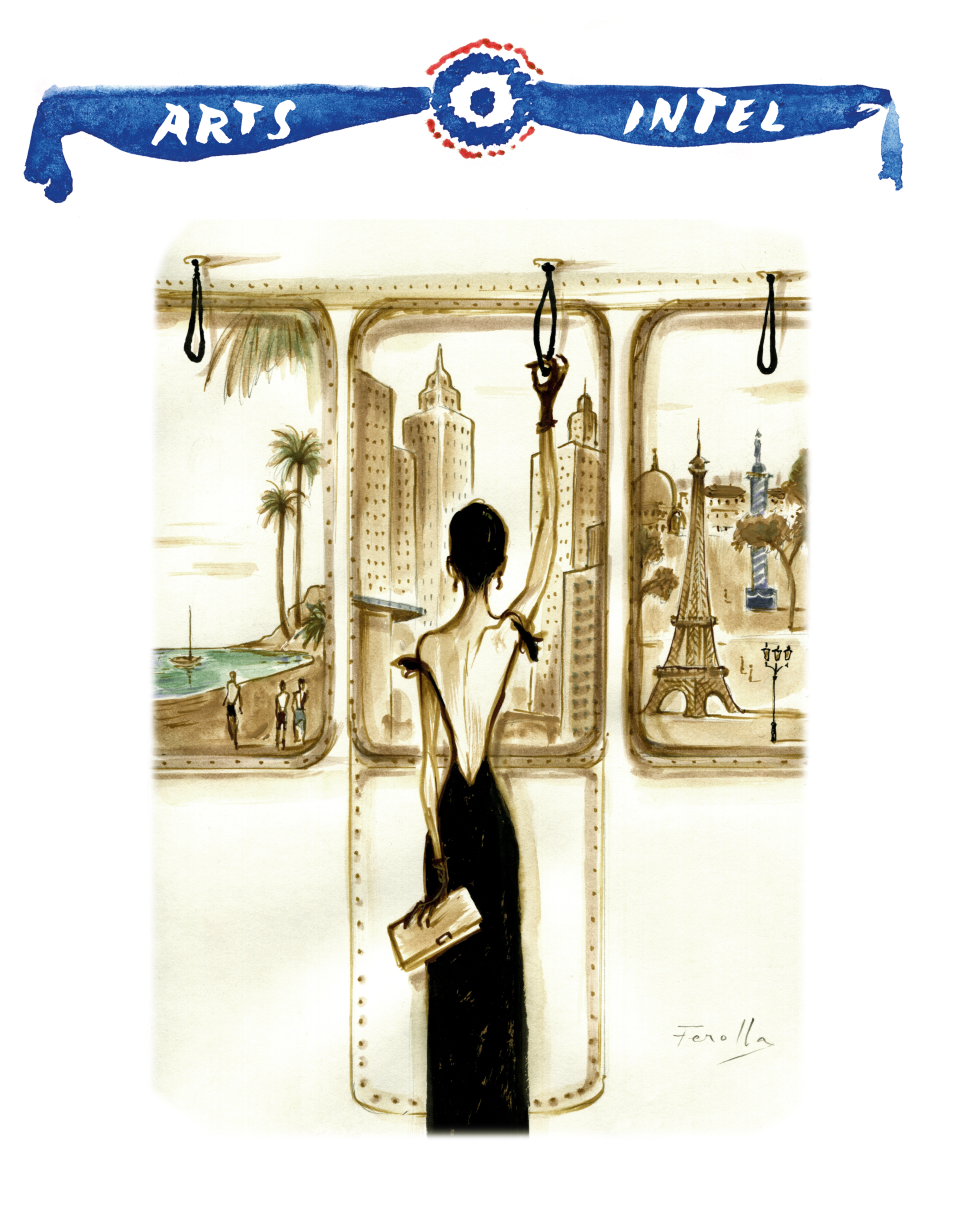Graydon Carter on Air Mail’s Evolution, Stores and Surviving the Internet
- Oops!Something went wrong.Please try again later.

When Graydon Carter and Alessandra Stanley launched Air Mail in 2019, it was a highly curated digital newsletter with modest expectations and a handful of detractors. One early review called it “Graydon Carter’s E-mail Newsletter for the Rich and Boring.” Publishing is a catty business, made even more spiteful amid the decimation wrought by the digital convulsion. But Carter, ever the optimist and with a highly tuned eye for presentation, brushes off the barbs.
“I guess the person was trying to be funny,” he laughed. “It’s certainly not for people who are boring and not necessarily rich.”
More from WWD
Shiseido to Enter Wellness Field With New Inner Beauty Brand
Miss Teen USA Pageant 2023: How to Stream for Free and What to Know About
Nailtopia Expands Disney-themed Offerings With New Villains Collection
Air Mail is designed to appeal to a reader like, well, Carter and his editors, many of them hailing from the Carter-era Vanity Fair diaspora. Asked for a thumbnail of the typical Air Mail reader, Carter laughed. “I have no idea. But I do know it’s somebody who has current stamps in their passport who has interests outside of the United States,” he said. “Most people I know read Air Mail.”
Whoever they are, there are enough of them, and luxury brand advertisers, to float the enterprise.
Carter and Stanley have raised $32 million in two rounds of funding; the series B round, at the end of 2021, was led by Standard Investments with participation from TPG Growth (a series A investor) and RedBird Capital Partners. Standard has two seats on the Air Mail board. Carter confirmed that Jeff Zucker, who is running RedBird’s media venture RedBird IMI, is interested in acquiring a majority stake in Air Mail, but he’s not ready to sell — yet.
“There are two or three people that are circling and RedBird is definitely one of them,” said Carter during a Zoom interview from his home office in Connecticut, where his caricature sketches hang from the rafters. “But we’re fine right now. And I think we’re in no rush.”

Air Mail’s revenue is derived from subscriptions (readers pay $80 annually), advertising (to advertise in an issue of Air Mail site costs about $55,000) and commerce (Air Mail gets a commission of products purchased from the Air Mail shop, called Air Supply), which includes recommendations from editors and exclusive items like Air Mail branded slippers from Stubbs & Wootton that retail for $550.
“When we started, we didn’t have a shop and I thought [revenue] would probably be about 50 percent advertising and 50 percent subscription,” said Carter. “And now I can see where it’s going. In a year, it will be 25 percent subscription, probably 30 percent advertising and everything else shop and our events business. The shop will grow 160 percent this year.”
The Air Mail shop appears consciously curated to offer something for a diverse array of budgets, even if the items are aimed at a certain cultural aesthetic. A $1,295 Veronica De Piante waistcoat in black peau de soie and a $32 spicy anchovy trio from Rizzoli are among the Made in Italy items featured ahead of Milan Fashion Week.
Air Mail readership has reached 400,000 (which includes paid and trial subscriptions), up 91 percent since launch. An Air Mail spokesperson would not say how many of those readers are paying for Air Mail, but paid subs are up 34 percent year-over-year. And Carter contends that Air Mail has “almost no churn, we have a renewal rate of about 80 percent every year.”
Still, Carter is more aware than most of the survival odds for magazines. “It’s almost unheard-of to have [an independent] magazine survive over a long period of time,” he said.
Recalling his days as cofounder with Kurt Andersen of the cheeky monthly Spy, Carter noted: “There were about 40 magazines that started in New York in the 1980s. All independent, and none of them survived. Not one. I would say that in about three years, we will either merge with someone or join a bigger group.”
Carter expects Air Mail to be profitable in two years. “That will make it six years in total, longer than I wanted,” he admitted. “But we grow very organically. We try not to do anything in a cheap way. Everything we do needs to feel like it’s organic to what Air Mail is.”
Air Mail launched the beauty and wellness vertical Air Mail Look, edited by Linda Wells, last March. An additional vertical is scheduled to come online in the spring. Carter is still cogitating on a print magazine/coffee table book, something with original photography and luxurious paper stock.
“I’ve been working with design director Angela Panichi on the cover,” he said, adding that it emphatically will not be a celebrity cover. “I’ve got some ideas already. And I thought if I can get the cover right I can start figuring out the insides.”
Air Mail also will bow its first limited series podcast on the making of “The Godfather,” based on the book by Mark Seal. And there will be more serialized podcasts and “at some point, a documentary unit.”
This month Air Mail bowed a “re-engineered” Arts Intel Report with a more elegant user interface and broader offerings.
The impetus for the vertical, Carter explained, was a chance encounter with Diana Krall. “Around the time I was leaving Vanity Fair, I bumped into her at the Waverly Inn. I asked her why she was in town and she said she had just done a concert with Tony Bennett. And I thought, why didn’t I know about that? I would have gone to that.”
Originally envisioned as a “cultural search engine” — and an alternative to rote TimeOut listings — the global shutdown during the pandemic allowed for a reset of the vertical. The new “more effective” Arts Intel Report search bar prompts users with phrases including “Art in New York”; “Ballet in November”; “Restaurants in Paris.”
“The trouble with searching the internet for things to do these days is that there’s just so much out there, and much of it isn’t great,” Julia Vitale, Air Mail’s deputy editor, wrote in an email. “The Arts Intel Report offers a really well-curated mix of recommendations for where to stay, what to do, and where to eat in key cities around the world — and unlike the static city guides that exist on the internet, our offerings are constantly updated, and constantly evolving,”
Carter signed a lease for an Air Mail brick-and-mortar shop and café on the corner of Hudson and Perry streets in Manhattan’s West Village. He hopes to have it up and running by spring. He envisions it as the next iteration of Air Mail’s London and Milan newsstands. The New York locale will sell books and magazines but also other select items, coffee and confections. “It’s got a little garden in the back, so we’ll have readings,” he said.
Air Mail is a highly specific view of culture and commerce (the Air Mail shop is dubbed “our highly selective storefront,” emphasis theirs). Carter believes it’s a viable niche, even in today’s overcrowded, peak subscription media landscape. Reported features on Quran burning in Scandinavia and the second-hand luxury fashion market in war-torn Ukraine intermingle with ruminations on the cultural cachet of Tom Wolfe and, in a nod to his Spy days, the weekly Attention Whore Index Poll, where readers vote among several nominees for biggest media whore of the week.
There have been controversial stories, including separate examinations of the behavior of both Leon Wieseltier and Armie Hammer. The latter, which was published in February and included Hammer’s only interview about the sex abuse allegations against him, was a blockbuster for Air Mail. It is the site’s most-read story and pushed the title’s readership over 300,000 for the first time. It also led to unsolicited outreach from a certain kind of guy.
“I don’t want to become the repository for every canceled who wants to make a comeback. And we did get a lot of inquiries from people like that,” said Carter.
And while he’ll take the clicks, it is not the kind of story on which to build a business. The Hammer piece, he said, was a “one-off. The readers you want are the people who understand the whole thing and they don’t come for just a single article.”
If the story — with the headline “Armie Hammer Breaks His Silence” — generated international headlines and a predictable internet conflagration, Carter remained above the skirmish.
“I actually have never gone on Facebook, and I have never gone on Twitter. So I don’t even know what this criticism is. I can imagine what it is. But the thing is with the Twitter and Facebook mob, I mean, if you let them run your life, you’ll go crazy.”
Best of WWD

